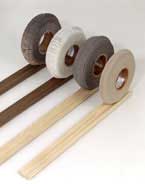Moulder Motor Upgrade Options
Advice on swapping up to a higher-horsepower motor, and other modifications to add muscle to your moulder. May 24, 2010
Question
Williams and Hussey Molder model 206 comes with a standard 2 HP motor. I would like to find out if someone has tried to upgrade the motor to a higher horse power like 3 hp or 5hp? If we upgrade, would it vibrate? Could we also install a power feeder to this molder? Where to get a power feeder? If we could upgrade 3 HP or 5 HP motor, where to get the motors compatible with W&H molder? Could we add a variable speed option as well? If yes, where to get the equipment for this?
Forum Responses
(Architectural Woodworking Forum)
From contributor L:
You can get the conversion parts from W & H.
From contributor G:
The W&H is limited to a 2HP max motor. That is what the shaft, bearing units and especially the transmission can take. However, putting a 3HP motor on it shouldn't really pose that much of a problem. You have the possibility of twisting the shaft or ruining a bearing. But these things can be easily replaced. You can purchase a variable feed unit for the W&H. I did it and it makes the machine. If you plan on upgrading the motor all you need to do is keep the RPM and rotation the same. I would first try the variable speed feed option first. You can slow the speed down and do much larger moldings that way.
From contributor D:
We've upgraded five Hussies in our shop and it's a vast improvement. The variable speed control, combined with mounting the whole works on a very heavy workbench, completely transforms the machine to a whole new level.
From contributor M:
The solution is a VFD. Use a 5 HP motor and a cheap (like Delta rather than ABB). Set the VFD to spin up the machine nice and slow. Also let it take the shut down speed nice and slow. This will cut most of the shaft/tran abuse. Make a head speed v. amps chart on your favorite species of wood. Of course make all the cuts similar in making the table. The table will either plot as a reasonably linear line or have a break point. That point is likely to be the machine getting grumpy with the added power. I back off 15% from my measured break point and things run great. I have done this on everything from Dantherm dust baggers to Northfield Planars. The method works. (I do use ABB VFDís but I know the smaller Deltas will give you the data you need). VFDs can change woodworking in major ways. Jump in on a small project like a 3-5 HP motor and you will see what I mean.
From contributor A:
Making the motor larger will have no impact on this machine. All machines are designed to use a specific motor. There is a limiting factor on all machines (what breaks when an excessive load is placed upon the machine). It is obvious on the W&H that the feeder sprocket and chain will break before a larger motor will be put to use. You can buy a 3hp or 5hp Unisaw. The limiting factor is the motor will stall underload if it is a 3hp. If you can stall the 5hp you are cutting the wrong material. The machine will not break, the moulder will break. Bridgewood made a W&H copy and they put a 3hp motor on it. Installing the W&H in a dedicated table is an improvement. Adding the variable speed is a must. Beyond that it is a small machine. Work with what you got.
From contributor G:
I have pushed my W&H to the point of making the motor smell a bit. You know that wonderful electrical smell. I have a very large baseboard cutter, I set my feed on 2'/min and I still need to do two passes and then motor struggles. If I put a larger motor on it I would not have this problem. I have the electric feeder so the only thing the motor does is spin the arbor. It would make a difference. It might twist the arbor though. Plus you could put a slightly different pulley system on it and increase the RPM's a bit. They are at about 7000, but I wouldn't want to go to much more.
From contributor R:
The other option that hasnít been mentioned and should offset the need for a heavier motor is the multi pass kit they offer for larger moldings. This would keep the strain off the shaft, bearings and motor as well as that wonderful scent you get when that 7" wide piece of 8/4 maple stops the knife cold in mid pass. It may take a little longer but still less then when you break a knife or the shaft and the machine goes down until you can get replacement parts.
